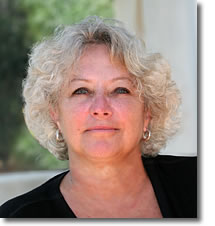| Bravewell
Collaborative Reports on Successful Integrative Medical Centers
The Bravewell Collaborative recently
released a report that will interest anyone who works with an integrative
medicine center. It's an extremely valuable resource for anyone
who manages such a center and for someone who's considering starting
one. "Best Practices in Integrative Medicine: A Report from
the Bravewell Clinical Network" outlines best practices at
eight US integrative medicine clinics, including business models,
strategies for growth, key services provided, and effective marketing
programs. A valuable appendix includes model patient intake and
assessment forms.
The first thing we learn from this report is that no two integrative
medicine clinics operate on the same organizational model. While
many of them share target populations and treatment philosophies,
these clinics have different approaches and operate within varying
economic constraints. They often offer different services aimed
at specific markets in their locality.
Bravewell Clinical Network
Pioneers Successful Business Models
In 2003, the Bravewell Collaborative formed the Bravewell Clinical
Network, designed to help integrative medical centers develop marketing
and practice management and financial-planning strategies. As part
of the network, representatives of the integrative centers meet
face-to-face twice a year to share what they've learned. The current
report offers an in-depth look at the eight centers in the network,
which include the following:
• Scripps Center for Integrative Medicine, Scripps Health,
La Jolla, California
• Osher Center for Integrative Medicine, University of California,
San Francisco
• Center for Integrative Medicine, University of Maryland
School of Medicine, Baltimore, Maryland
• The Continuum Center for Health and Healing, Beth Israel
Hospital, New York City
• Duke Integrative Medicine, Duke University, Durham, North
Carolina
• Alliance Institute for Integrative Medicine, Cincinnati,
Ohio
• Jefferson – Myrna Brind Center for Integrative Medicine,
Thomas Jefferson Medical College, Philadelphia, Pennsylvania
• Advocate Center for Complementary Medicine, Park Ridge,
Illinois
The centers in this report range from one-and-a-half
full-time employees to more than 25 full-time employees. One has
1,900 square feet of space, two have 4,000 square feet, and the
two largest have about 18,000 square feet. The smallest have 4,000
patient visits per year, while the largest have more than 30,000
patient visits per year.
Each center has a different business model, dependent on specific
factors such as the local marketplace, the associated medical institution,
and the particular expertise and interests of the leaders who founded
the center. At present, four of the centers are at break-even or
profitable, one is close to break-even, and three are working towards
profitability. The most common complementary therapies offered at
the centers include acupuncture, massage, mindfulness-based stress
reduction, mind-body therapies, nutritional counseling, and yoga.
All the centers offer services focused on lifestyle changes, prevention,
and wellness, and all of them use a team approach to care. Seven
of them have research programs.
These centers work actively to develop philanthropic support. They
use advisory boards to help increase awareness about the center
and the benefits of integrative medicine, and they all engage in
community outreach and education. Payment options vary: some are
available on a fee-for-service basis, some take insurance, and some
use both.
Fees Charged by Integrative Medicine Centers
Initial Patient Visit with MD
Acupuncture Session
Biofeedback Session
Nutrition Counseling Session
Energy Healing Session
Chiropractic Visit
Massage Session
Psychotherapy Session
Psychiatric Session |
$120-$400
$100-$200
$150-$175
$75-$100
$100-$150
$90-$275
$65-$120
$110-$200
$190-$380 |
Source: "Best
Practices in Integrative Medicine," The Bravewell Collaborative
 "The
various business models are very different, and all of them are
working," says Bonnie Horrigan, Director of Communications
and Public Education for the Bravewell Collaborative, who wrote
the report. "One key lesson is that you don't have to build
a separate building or organization in order to have an integrative
medicine center. You can take a look at where you are and what you
already have, and then start from that basis. For example, the Scripps
Center for Integrative Medicine built an alliance with the Scripps
hospital system, which has a strong cardiac program. Now Scripps
cardiologists refer heart patients to the integrative center for
its lifestyle change program." "The
various business models are very different, and all of them are
working," says Bonnie Horrigan, Director of Communications
and Public Education for the Bravewell Collaborative, who wrote
the report. "One key lesson is that you don't have to build
a separate building or organization in order to have an integrative
medicine center. You can take a look at where you are and what you
already have, and then start from that basis. For example, the Scripps
Center for Integrative Medicine built an alliance with the Scripps
hospital system, which has a strong cardiac program. Now Scripps
cardiologists refer heart patients to the integrative center for
its lifestyle change program."
Another interesting point is that the various centers specialize
in so many different aspects of health care. The Continuum Center
in New York generally delivers primary care. The University of Maryland
developed an alliance with Kernan Hospital and its trauma center,
and part of its integrative medicine program focuses on trauma care.
The University of California at San Francisco (UCSF) operates a
substantial cancer program, and now the UCSF Osher Center is offering
integrative medicine throughout the cancer program. "Integrative
medicine isn't just for primary care or OB/GYN or cancer or arthritis,"
Horrigan comments. "There are applications and programs within
integrative medicine that are applicable to many areas of health
care."
"Best Practices in Integrative Medicine" discusses the
ways each clinic has achieved success within its own unique marketplace
and corporate structure, noting several factors that lead to success
in integrative medicine. One of them is building a distinctive reputation,
as Scripps did when it began to specialize in cardiac care and Osher
did in cancer care. "These centers are all expanding, but when
they first started out, they all had specialties, and that helped
because it gave them a focus on which to build a base," Horrigan
says.
Many of the successful integrative medicine centers have built joint
programs with conventional departments. "The more the center
interacts with the organization of which it is part, the more successful
it tends to be," Horrigan notes. "That means offering
educational programs, knowing who the other physicians are, getting
referrals, being part of the whole organization."
Another key factor for success: paying attention to economic realities
and developing a thoughtful mix of higher margin services. For example,
massage services don't generate significant revenue, but most of
the centers offer it at cost because it's beneficial for their patients.
Then they offer other services that do bring in sufficient money,
so that on balance, the center can cover all its expenses.
Summit Planned on Integrative
Medicine
The Bravewell Collaborative is partnering with the Institute of
Medicine (IOM) to convene a summit to explore the science and practice
of integrative medicine, with a focus on improving patient-centered
care and promoting the nation's health. With sponsorship from the
Bravewell Collaborative, IOM will host a National Summit on Integrative
Medicine and the Health of the Public, to be held in Washington,
DC, on February 25-27, 2009.
Traditionally, health care has focused primarily on healing physical
ailments, without much attention to the emotional challenges that
often accompany illness and can hinder patients' abilities to take
care of themselves. In a recent report, "Cancer Care for the
Whole Patient: Meeting Psychosocial Health Needs," IOM proposed
a new standard of care, stating that all cancer patients should
routinely receive support and services for stress, depression, and
other mental and social problems.
The summit next February will build on that report and look at many
ways integrative medicine addresses the personal and community environments
that empower patients to be active participants in their own care.
It will also focus on finding ways to spur changes and lead people
to maintain wellness and avoid disease.
Consumer Information
and Personal Health Planner Are Available
The Bravewell Collaborative website includes a valuable section
for consumers on patient empowerment and ways to navigate the health
care system. "Take an active role in your own health care,"
the website urges. "One of the core principles of integrative
medicine is that you, working in partnership with your health care
provider, should be the ultimate decision-maker regarding any of
your own health concerns." The website offers many links to
additional resources.
The recent two-hour PBS documentary, "The New Medicine,"
was funded in part by many of the Bravewell Collaborative philanthropists,
and the "New Medicine" website is another valuable tool
for consumers. It has a "health planner" tool for tracking
your own personal healthy lifestyle changes, plus a timeline showing
the history of integrative medicine. There's information on specific
conditions, such as allergies, anxiety, chronic pain, depression,
migraines, surgery recovery, and many more. In addition, there's
a link to order the DVD of the documentary and/or a companion book.
Elaine Zablocki is the former editor of CHRF
News Files.
Resources
Consumer information on integrative medicine: www.thenewmedicine.org
The Bravewell Collaborative: www.bravewell.org
To purchase "Best Practices in Integrative Medicine: A Report
from the Bravewell Clinical Network": http://www.bravewell.org/transforming_healthcare/models_for_change/best_practices/
The National Summit on Integrative Medicine: www.iom.edu/integrativemedicine/.
For the IOM report, "Cancer Care for the Whole Patient,"
go to: http://www.iom.edu/CMS/3809/34252/47228.aspx.
Brief reports for patients and providers are available at the same
web location.
|



![]()
![]()
![]()

 "The
various business models are very different, and all of them are
working," says Bonnie Horrigan, Director of Communications
and Public Education for the Bravewell Collaborative, who wrote
the report. "One key lesson is that you don't have to build
a separate building or organization in order to have an integrative
medicine center. You can take a look at where you are and what you
already have, and then start from that basis. For example, the Scripps
Center for Integrative Medicine built an alliance with the Scripps
hospital system, which has a strong cardiac program. Now Scripps
cardiologists refer heart patients to the integrative center for
its lifestyle change program."
"The
various business models are very different, and all of them are
working," says Bonnie Horrigan, Director of Communications
and Public Education for the Bravewell Collaborative, who wrote
the report. "One key lesson is that you don't have to build
a separate building or organization in order to have an integrative
medicine center. You can take a look at where you are and what you
already have, and then start from that basis. For example, the Scripps
Center for Integrative Medicine built an alliance with the Scripps
hospital system, which has a strong cardiac program. Now Scripps
cardiologists refer heart patients to the integrative center for
its lifestyle change program." 